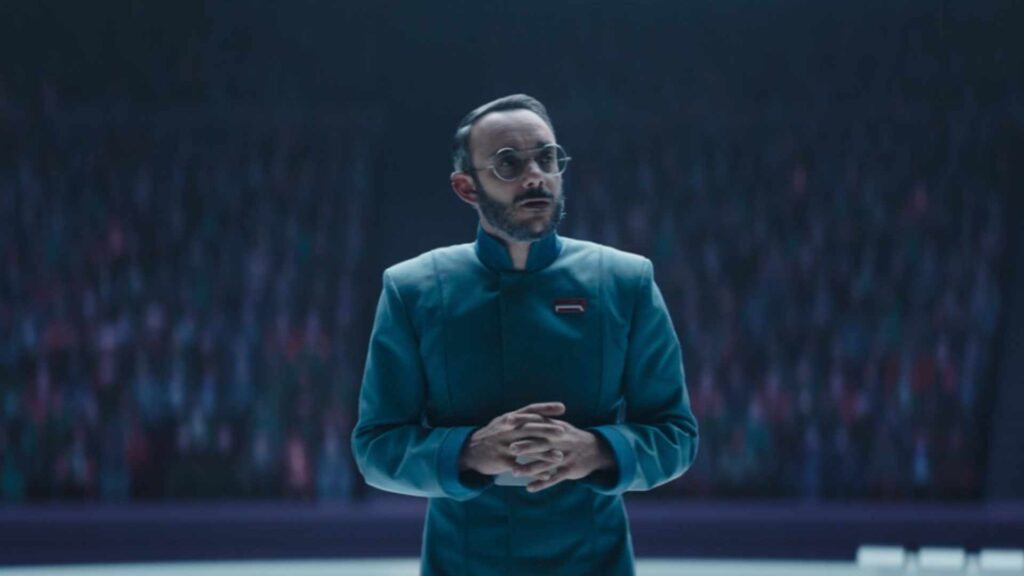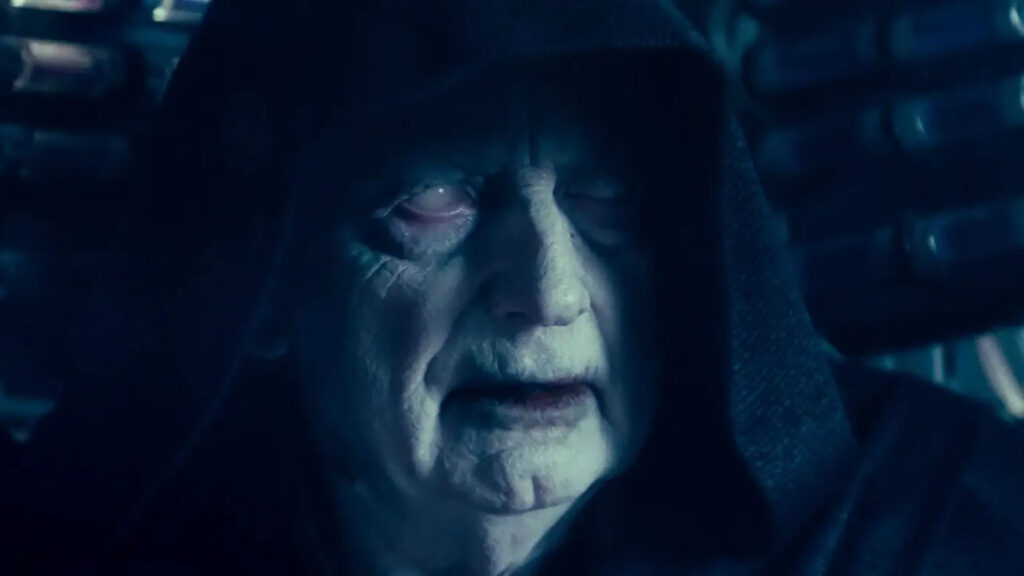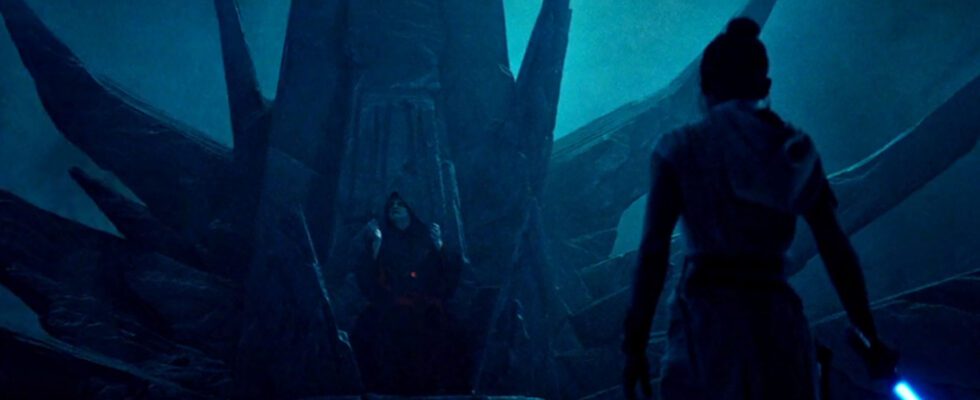The latest developments in The Mandalorian series give rise to a theory: what if the series could justify the much-maligned scenario of The Rise of Skywalker, by giving it thickness?
The Mandalorian will it be an opportunity for Lucasfilm and Disney to give credibility to the screenplay choices for the third trilogy of Star Wars, which strongly divided the public? Watching the third episode of season 3 of the series, released on March 15, it was the impression that predominated during a scene, offered just after the prologue. We explain to you. Beware of spoilers!
Cloning, the Empire’s field of research
In the episode, we momentarily leave the adventures of the Mandalorian to focus on the trajectory of another character, Doctor Pershing. You’ve already seen him in the series: he appeared a few times in the first two seasons. But this time, he is entitled to all the attention of the writers, since he is at the heart of the adventures. We only see him, or almost.
When we find him, Dr. Pershing is giving a speech of redemption about his past actions (he is a former member of the Galactic Empire, who is now required to work – under surveillance – for the New Republic). He nevertheless defends the interest and relevance of his work: in his eyes, they have been misused for malicious purposes, but remain valid.
Very quickly, we understand that the person concerned was working on the technique of cloning. After a personal tragedy, Dr. Pershing devoted himself body and soul to this field of study. In particular, he founded his work on the Kaminoans, whose competence in this field was maximum: they are the ones who are at the origin of the army of the clones of the Republic, in the prelogy.

During his speech, Dr. Pershing clarified two points: first, a single strand of DNA is enough to clone an individual. Then, various strands can be combined to create replicas incorporating the best attributes of both donors. At least, this second point was at the center of the geneticist’s research. It is not known if he had succeeded at that time.
At this point in the series, we are five years after the events of Return of the Jediepisode VI of the films of Star Wars. Emperor Palpatine has been defeated: his body was thrown by Darth Vader into a Death Star air shaft. Everyone obviously thinks he is dead, whether from the fall or the explosion of the space station.
And here comes Palpatine again, without warning
How to subscribe to Disney+ to see Star Wars
Disney+ is available in France:
However, thirty-two years later Return of the Jedi, Palpatine makes his return. More exactly, it is a clone of the dictator who returns. His survival has never been mentioned since episode VI. The new trilogy only talks about it in the third installment, released in 2019. The Rise of Skywalkerthis reality does not exist for Episode VII (The force awakens) nor for episode VIII (The Last Jedi).
It is during the third film that we learn Palpatine’s stratagem: to create in the greatest secrecy clones of himself, to escape death. This plan, it is stated, was put in place during his reign on the planet Exegol. Pershing’s ties to this project are unknown. Still, the existence of the geneticist’s work proves the Empire’s interest in cloning.
The pretext of the big secret plan scaffolded under everyone’s nose is the central justification for bringing Palpatine back from the dead. A script pirouette, for some. A glaring lack of originality for others, because reconvening an old evil figure was the sign, for part of the public, of the weakness of the scenario of this trilogy.

This lack of coherence and homogeneity in the story of the three films has various explanations. On the production side, the transition from one filmmaker to another gave the feeling that everyone was writing their own story, without really taking into account previous developments. To make matters worse, Episode IX, which brought Palpatine back, suffered from a director change.
Episode VII was directed by JJ Abrams. He made Snoke the main villain of his story. Episode VIII was entrusted to Rian Johnson. It is with this film that the scenario writer kills Snoke. Episode IX arrives. Colin Trevorrow, who had been working on this film for two years, was fired in 2017 for “creative differences” – the rewriting of his script by a third party would not have pleased him.
JJ Abrams is then called for help and must take over the project in 2017, with the difficulty of finding a new antagonist around which to build a story, since Snoke is no longer. Kylo Ren (played by Adam Driver) could he have fulfilled this role of big bad? Maybe. This lead, if it existed, was dropped in favor of a Palpatine return.
This lack of unity between the three episodes is one of the most frequent complaints that we can read about the third trilogy (at the box office, the films did less and less well: more than two billion dollars for the first, half as much for the third). Another grievance is Palpatine’s return — the actor playing him, Ian McDiarmid, believed a return was impossible.

Give thickness to The Rise of Skywalker ?
So this is the context in which episode 3 of the third episode of The Mandalorian. It is chronologically between Episode VI (Palpatine’s death) and Episode IX (his return as a clone), but after The Rise of Skywalker in the planning of the releases, and therefore after the criticisms around the scriptwriting failures of the third trilogy.
Developing the series around cloning may, in this light, appear as a way of giving depth to the plot of episode IX, which, for part of the public, seemed to come a bit from nowhere. Show that the Empire was working on cloning well, to explain that a return of Palpatine is not absurd in these circumstances. It reminds a retcon — retroactive continuity.

Several Internet users also smell the blow: “All this doctor story will be an effort to explain in one way or another that Palpatine has returned”, writes for example TomakaTom. ” This is likely part of Palpatine’s return and the rise of the First Order says endkafe. And there are many other reviews of the same kind on the net.
This theory is obviously debatable and uncertain. However, we already knew The Mandalorian, Dr. Pershing’s interest in Grogu, a Force-sensitive character. Remember that the geneticist had put a bounty on the little man’s head. At the time, there was talk of using his blood in guinea pigs to give them powers with the Force.
This point reinforces this hypothesis: perhaps Grogu should have served or could have served from the perspective of master plan by Palpatine. We may never know. Perhaps this will be revealed later in the series. It might make sense to demonstrate to audiences that there is indeed continuity in Star Wars, even if it sometimes feels like it’s all over the place.
If you liked this article, you will like the following ones: do not miss them by subscribing to Numerama on Google News.
Some links in this article are affiliate. We’ll explaine everything here.
